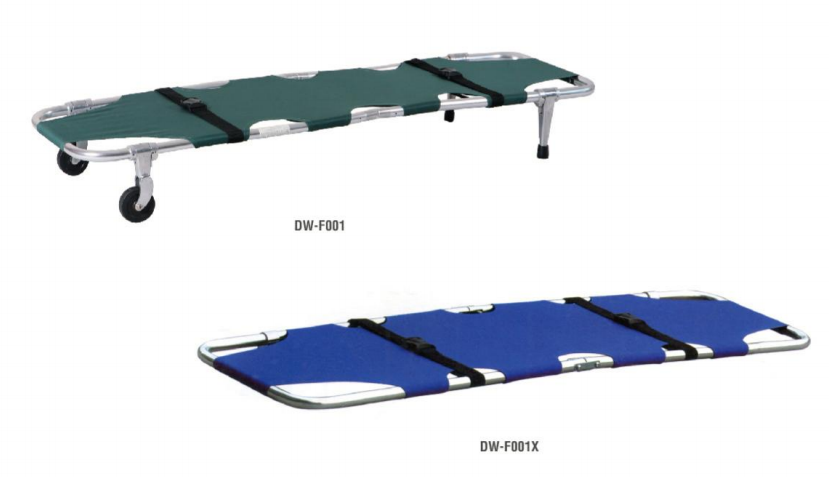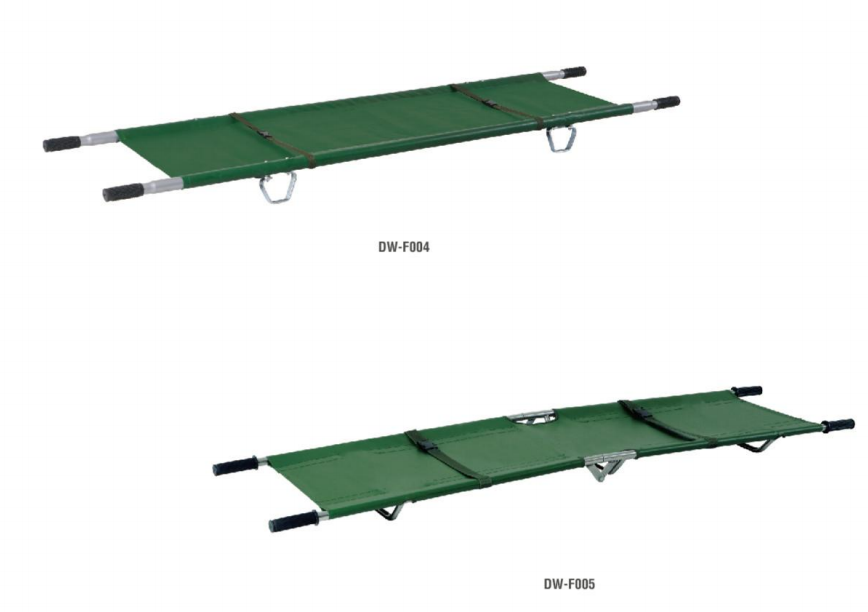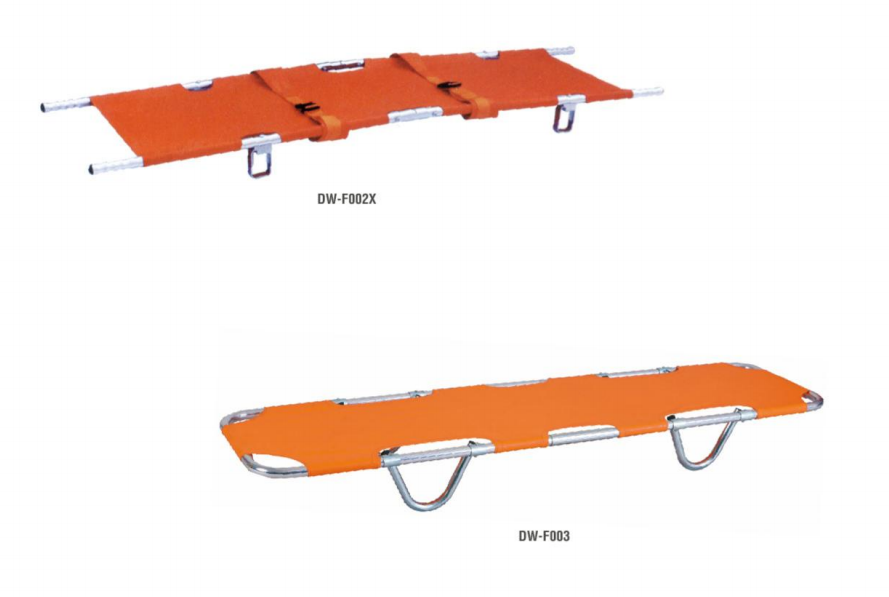1. Mechanical Design & Engineering Precision
The stretcher featuring twist lock wheels represents a breakthrough in medical transport, merging robust mechanics with user-centric functionality. Unlike traditional push-lock systems, its dual-action twist mechanism—rotating a cam to engage wheel housings—provides superior stability, resisting both linear movement and swivel rotation. This solves critical issues: unintended rolling during procedures and instability on uneven terrain, while enabling effortless maneuverability.
1.1 Wheel Construction & Material Innovation
Wheels combine a high-strength nylon core for rigidity with a polyurethane tread, balancing abrasion resistance and shock absorption. Non-directional lugs enhance traction on diverse surfaces (linoleum, asphalt) with low noise (≤65 dB). Bariatric models use reinforced stainless steel axles (400 kg load capacity) and precision ball bearings, reducing rolling resistance by 30%. Tread design minimizes vibration, crucial for patient comfort during transport.
1.2 Twist Lock Mechanism Dynamics
A palm-sized rotary knob (90° twist) activates opposing cam arms, locking both wheel rotation and swivel. Meets ISO 7176-19:2019 standards (50 N lateral force resistance). Emergency override lever ensures instant unlocking under load, vital for rapid repositioning in critical care. The system’s mechanical simplicity—no exposed springs/cables—reduces maintenance and debris risk.
2. Clinical Applications & Operational Benefits
Twist lock wheels transform stretchers into versatile platforms, optimizing care in emergency, hospital, and specialized settings.
2.1 Emergency Response Efficiency
In pre-hospital care, secure locks stabilize stretchers on inclines/uneven ground, preventing accidental movement during interventions (intubation, hemorrhage control). 12-inch wheels offer a low center of gravity (35 cm), reducing tipping risk. Field data shows 40% faster setup for procedural positioning vs. push-lock systems, critical in time-sensitive emergencies.
2.2 Intra-Hospital Transfer Precision
Ideal for radiology/MRI suites, locks ensure mm-level alignment with imaging equipment. In surgical recovery, vibration-dampening treads protect IV lines during repositioning. 360° swivel with 80 cm turning radius navigates narrow hospital corridors (91 cm standard width), improving workflow in tight spaces. Anti-slip locks maintain prescribed angles (e.g., 30° for neurological patients to reduce ICP).
2.3 Specialized Patient Care
-
Neurology: Stable positioning minimizes secondary brain injury risks from sudden movements.
-
Cardiology: Shock-absorbing treads reduce cardiovascular stress during transfers.
-
Pediatrics: 8-inch wheels with rubber edges prevent pinch hazards; ergonomic knobs suit gloved use for infection control.
3. Global Usability & Cultural Adaptation
Designed for diverse environments, the system balances accessibility and durability.
3.1 Universal Operability
Standardized icons (red lock/green unlock) and tactile feedback (audible click) aid users with visual impairments. Low torque (1.5 N·m) suits all caregivers, with left/right symmetry. Pictogram instructions support low-literacy settings, ensuring consistent use worldwide.
3.2 Environmental Resilience
Materials withstand extreme conditions:
-
Tropical: UV-stabilized treads and salt-resistant components.
-
Cold: Nylon cores with low-temp modifiers (-20°C functionality).
-
Hazardous: ESD-compliant variants for ORs, preventing static discharge.
Modular design allows tool-free wheel replacement, essential for remote areas. 5-year lifespan (with annual maintenance) aligns with WHO sustainability guidelines, offering 20% longer service than conventional systems.
The twist lock wheel stretcher redefines patient transport through mechanical ingenuity and global usability. By prioritizing stability, maneuverability, and adaptability, it enhances clinical precision while meeting the diverse needs of healthcare providers and patients worldwide—proving that foundational medical devices can deliver innovative solutions for safer, more efficient care.


